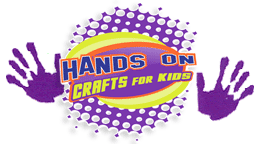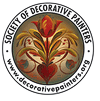S-strokes
These are usually accomplished with a round brush. Load the brush
with creamy, smooth paint that has been diluted with water so that
it flows easily. Start on the point of the brush, and then push
down as you go in an “S” shape. Lift the brush to finish
on the point.
S-strokes in a row make a beautiful border. By themselves, they
are terrific flower petals or leaves.
An S-stroke made with a flat or filbert brush has a little different
effect. With these kinds of brushes, start on the chisel edge of
the brush for the flat part of the S-stroke, and then use the flat
sides of the brush for the thick part of the “S”.
Comma Strokes
Comma strokes are a basic stroke in many, many painting designs.
They too are done with a round brush and thinned paint. Push the
tip of the brush down so that the end of the comma is made, then
drag the brush toward you, lifting the brush to a point so that
the comma tail is made.
Comma strokes can also be made with a filbert brush which has a
rounded end. Load the brush with the same diluted paint, lay it
down, and, as you lift, turn the brush to the chisel side in order
to get the comma tail.
Line work
Graceful, beautiful lines are easy to accomplish with a good liner
bush. Load the brush with diluted paint, and then lightly drag it
across the surface. If you drag the very tip of the brush, the line
is thin. If you apply more pressure, the brush hairs splay and the
line gets thicker.
Calligraphy
Brush strokes make lettering, too. Use a flat brush for calligraphy,
or there are special calligraphy brushes available. They are flat
but with slightly longer hairs to hold more paint.
The fonts in your computer and calligraphy books as resources for
choosing a calligraphy style for a project. Books are often available
in the sale bins of book stores.
Calligraphy enhances projects or stands by itself as a design. The
styles can create a mood for your project – a useful tool
for a successful painting.








